
Insights from DFC’s Annual CPD at the University of Edinburgh
By: Jack Mitchell, Graduate Engineer
This year marked the eighth annual DFC CPD event at the University of Edinburgh. For many, it was a welcoming party for a host of new starters and my first visit to the Scottish capital since joining DFC permanently last year. The theme of this year’s CPD was all about the ‘magic numbers’ often used in fire safety guidance in England and beyond. These are the values embedded in codes and standards, sometimes without obvious roots. Over the two days, we explored where these numbers came from, why they matter, and what they mean for modern fire engineering practice, as well as learning from some of the best fire engineering academics. Alongside the technical sessions, the event was a great opportunity to catch up with the wider DFC team in a relaxed setting.
Day One: Origins of Fire Safety Numbers
The first day featured four sessions led by Dr Angus Law and Professor Luke Bisby. These sessions delved into the historical and scientific underpinning key numerical thresholds in fire safety guidance.
In the first session, Dr Law introduced the concept of ‘magic numbers’ in fire engineering, referencing Margaret Law’s paper questioning the limitations of fixed numerical values in design. These ‘magic numbers’ are often used across the fire engineering discipline. We explored the origins of minimum exit width requirements and the fascinating (factual) story behind the 2.5 minute evacuation time (now part of Approved Document B), which originated from a fire in an Edinburgh theatre.
In the second session, also led by Dr Law, we explored the concept of external fire plumes, drawing on historic research from the former Fire Research Station in the UK. We learned how fire plume behaviour —regardless of size— can be explained using a few fundamental parameters. A fascinating live lab demonstration brought these principles to life, showing real fire plumes in action.
After lunch, attention turned to the origins of some more ‘magic numbers’, on this occasion those found and used when classifying external wall systems under BR 135. This session provided an in-depth look at the factors that contributed to the Grenfell Tower Fire in 2017 and the origins of today’s numerical criteria we use for assessing external wall performance in fire conditions.
The day concluded with Dr Law and Neal Butterworth, one of our directors, sharing details of DFC-funded research on cladding fire performance, led by Dr Cameron MacLeod at the University of Edinburgh. The research aims to develop a greater technical understanding of the fire performance of external wall systems. It involves experimental testing to understand how different cladding materials and configurations behave under real fire scenarios. Ultimately, these insights will support safer building design and inform future fire safety understanding.
Day Two
Building on the foundations laid on the previous day, Day Two continued with practical demonstrations and deeper historical context, starting with a live demonstration linked to the DFC-funded fire performance research introduced on Day One. We witnessed a live demonstration of an oriented strand board (OSB) board burning with mineral wool insulation highlighting an important point: the impact of insulation behind a cladding system isn’t just about how it burns, but also how it absorbs or reflects heat emitted from the burning cladding, and how that heat is then fed back into the cladding material.
The first session of the day involved a dive into how external fire spread is calculated and where those methods come from, focusing on the evolution of the “enclosing rectangle” method. This approach is widely used to determine the required external wall fire resistance for buildings in line with BR 187.
The second session tackled the history behind the 18m and 30m trigger heights used in fire safety guidance. The 18m threshold dates back to the reach of the now defunct wheeled escaped ladders once used by UK fire services. The 30m limit, on the other hand, began as a planning measure to prevent streets being deprived of natural light by tall buildings before evolving into a fire safety benchmark for improved provisions at greater heights.
Socialising
The evening before the event began was a chance for us all to socialise. Some of the team embraced Edinburgh’s spirit with a ghost bus tour through the city’s darker corners. As the rest of us arrived, we naturally found ourselves in the nearest hospitality spot, catching up, sharing stories and welcoming new starters and graduates into the fold.
For those willing to brave the early start, sunrise on the opening day was witnessed from the summit of Arthur’s Seat, following a 05:.50am departure!
After the first day’s sessions, we were joined by Dr Law at the official team dinner for a delicious three-course meal, a few more drinks and plenty of lively conversation.
Key Takeaways
The talks gave us a better understanding of where our codes and standards come from, why certain rules and numbers exist and why it’s so important for us, as engineers, to understand their origin in order to judge their suitability for real buildings.
Better understanding of the roots of prescriptive guidance helps shape more robust and contextually appropriate fire safety strategies. These solutions, in turn, give rise to more flexible building design and can enable innovation.
Reflections from the Event
Jack Mitchell, Graduate Engineer
Both days included some impressive lab demonstrations on fire behaviour and offered an insight into ongoing DFC-funded external wall fire performance research at the university. I particularly enjoyed the early climb to the summit of Arthur’s seat at sunrise to take in the incredible views over the city and out onto the North Sea. It was well worth the early start! The event provided the DFC team with the perfect opportunity not only to learn and meet new starters but also to enjoy and reconnect with colleagues from other offices.”
Andy Caba, Graduate Engineer
- Posted by Design Fire Consultant
- On 1st October 2025


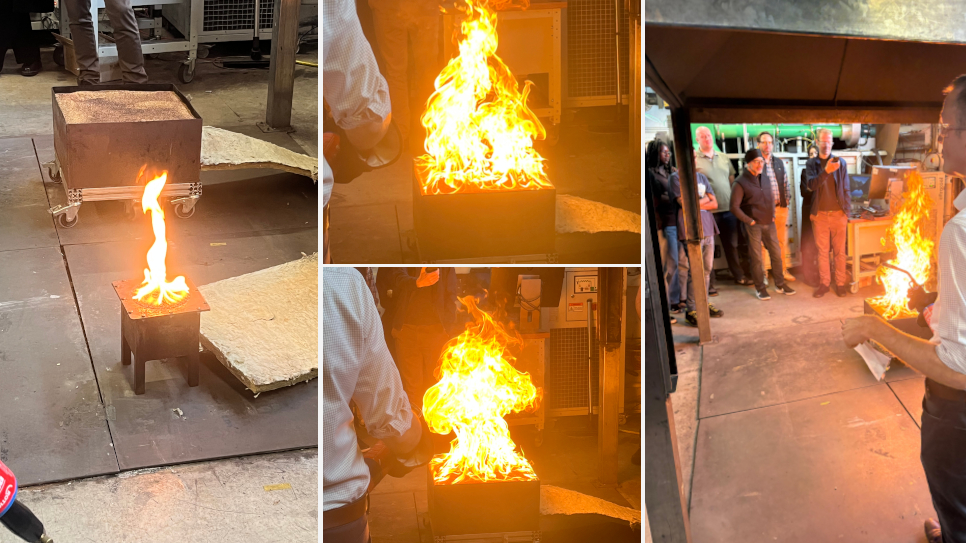

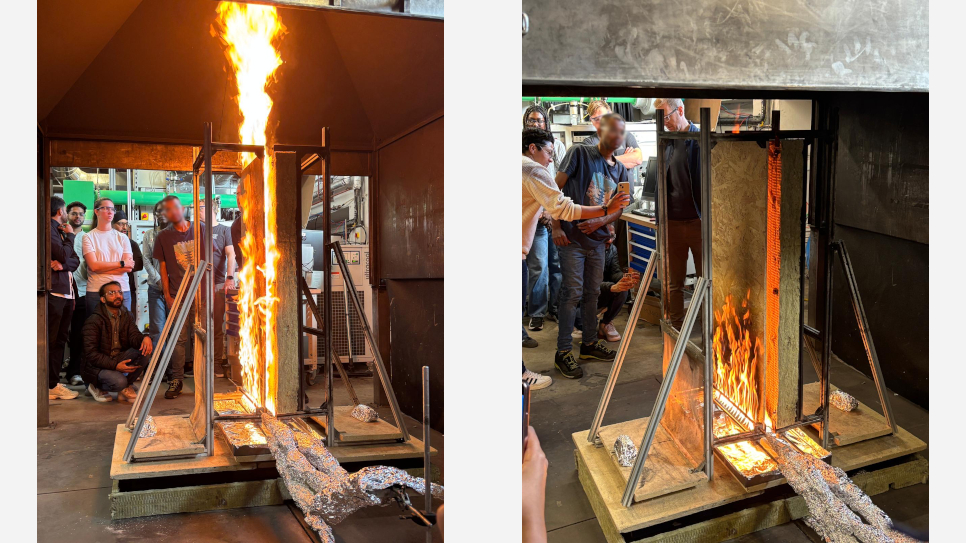
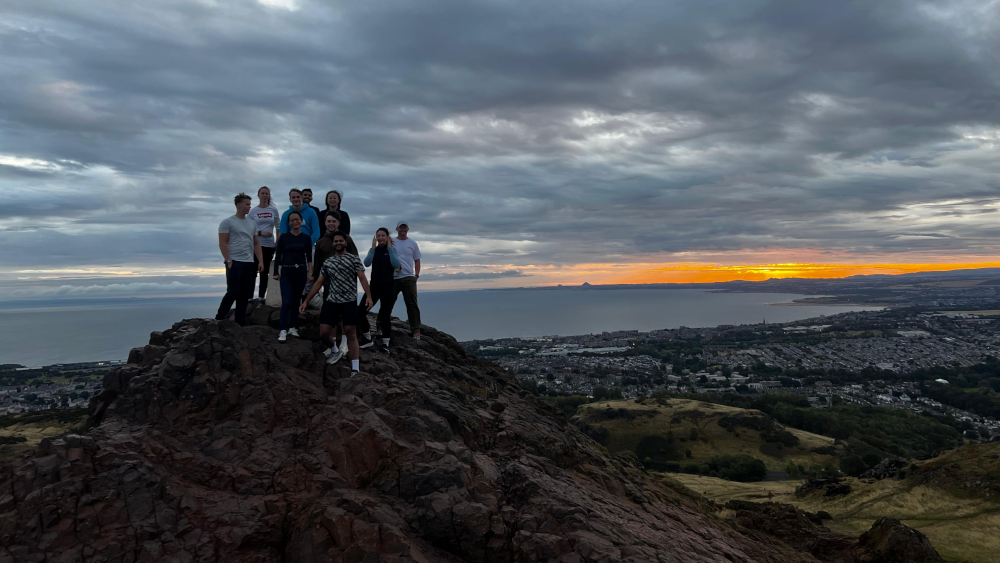
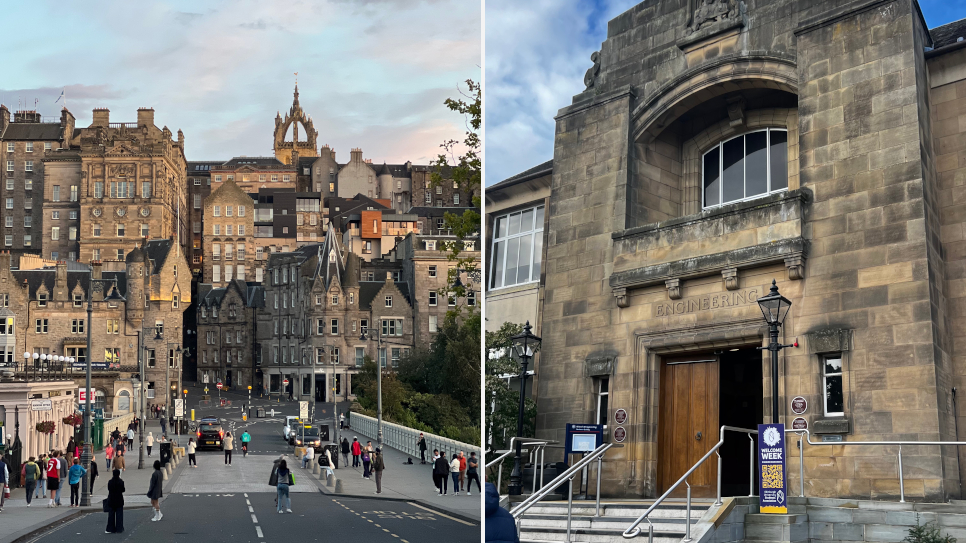
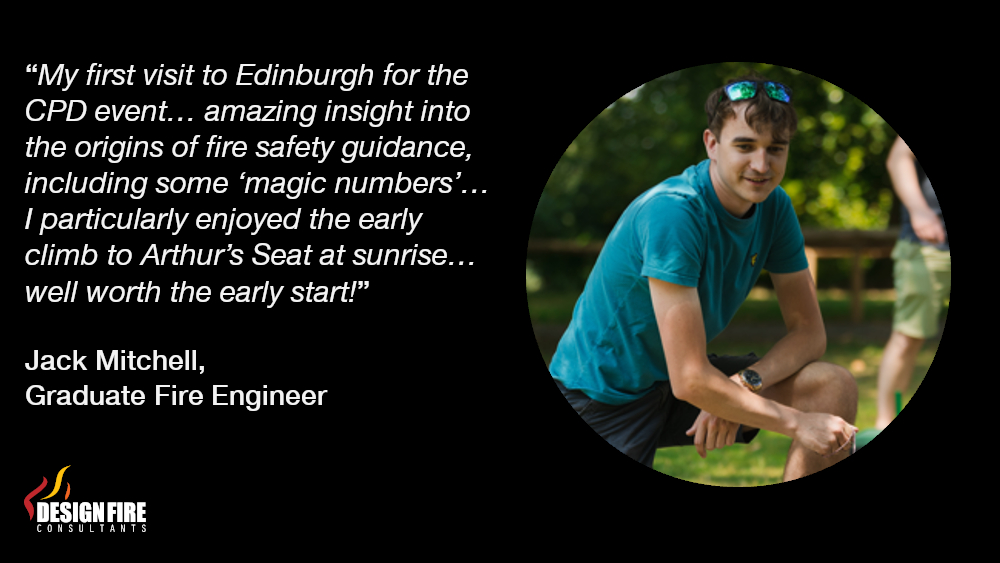
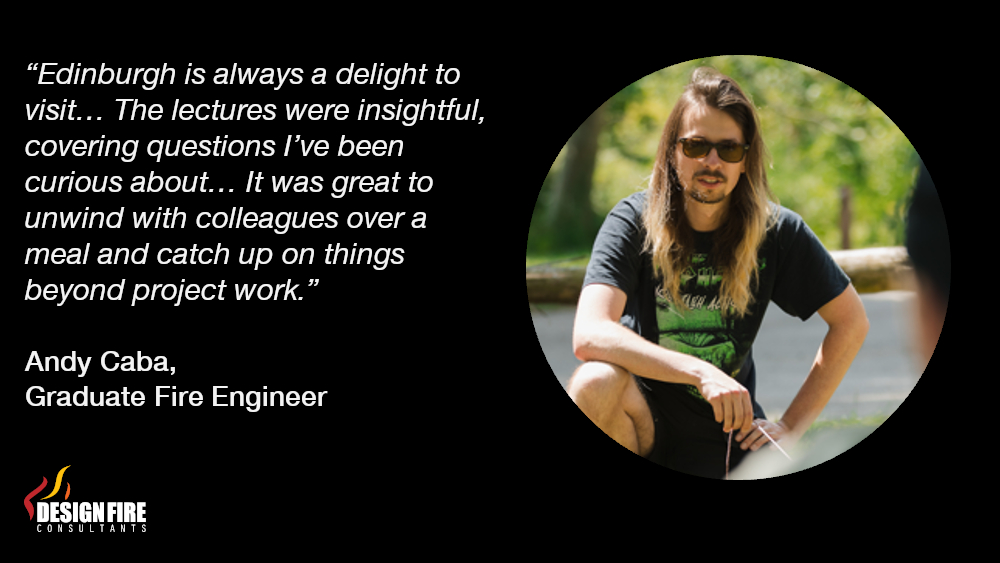


0 Comments